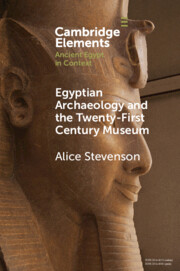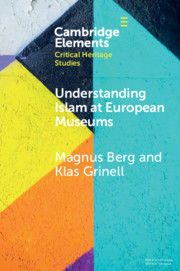Refine search
Actions for selected content:
28 results
11 - The Mecca of Entertainment?
-
- Book:
- A Black Army
- Published online:
- 16 June 2025
- Print publication:
- 17 July 2025, pp 208-231
-
- Chapter
- Export citation
Beyond Interdisciplinarity: How Rosine 2.0 Created Social Structures of Community Care
- Part of
-
- Journal:
- Public Humanities / Volume 1 / 2025
- Published online by Cambridge University Press:
- 09 June 2025, e104
-
- Article
-
- You have access
- Open access
- HTML
- Export citation
Chapter 11 - The Visual and Plastic Arts
- from Part II - Intellectual, Cultural, and Political Contexts
-
-
- Book:
- Percy Shelley in Context
- Published online:
- 17 April 2025
- Print publication:
- 24 April 2025, pp 82-90
-
- Chapter
- Export citation
8 - Remembering the West India Regiments
-
- Book:
- Soldiers of Uncertain Rank
- Published online:
- 17 October 2024
- Print publication:
- 31 October 2024, pp 207-222
-
- Chapter
- Export citation
Alternative icons: rethinking symbols of power in ‘The World of Stonehenge’
-
- Article
-
- You have access
- Open access
- HTML
- Export citation
Princely prisons, state exhibitions, and Muslim industrial authority in colonial India
-
- Journal:
- Journal of the Royal Asiatic Society / Volume 34 / Issue 4 / October 2024
- Published online by Cambridge University Press:
- 17 May 2024, pp. 799-820
- Print publication:
- October 2024
-
- Article
- Export citation
22 - Two Dark Rooms
- from Part V - Images and Screens
-
-
- Book:
- Jazz and American Culture
- Published online:
- 09 November 2023
- Print publication:
- 30 November 2023, pp 338-351
-
- Chapter
- Export citation
1 - Exhibitions of Modernist Iranian Art
-
- Book:
- The Cultural Politics of Art in Iran
- Published online:
- 07 September 2023
- Print publication:
- 21 September 2023, pp 19-90
-
- Chapter
- Export citation
Chapter 4 - East Anglia
- from Part I - Biographical Aspects
-
-
- Book:
- W. G. Sebald in Context
- Published online:
- 24 August 2023
- Print publication:
- 07 September 2023, pp 30-39
-
- Chapter
- Export citation
Chapter 10 - Shakespeare Does His Bit for the War Effort
-
-
- Book:
- Shakespeare at War
- Published online:
- 17 August 2023
- Print publication:
- 17 August 2023, pp 101-110
-
- Chapter
- Export citation

Egyptian Archaeology and the Twenty-First Century Museum
-
- Published online:
- 19 August 2022
- Print publication:
- 08 September 2022
-
- Element
- Export citation
European museology and colonial concord: Italy at the 1934 Expo du Sahara in Paris
-
- Journal:
- Modern Italy / Volume 27 / Issue 3 / August 2022
- Published online by Cambridge University Press:
- 29 July 2022, pp. 239-258
- Print publication:
- August 2022
-
- Article
-
- You have access
- Open access
- HTML
- Export citation
12 - Bookbinding
- from Books in Detail
-
- Book:
- Readers in a Revolution
- Published online:
- 06 June 2022
- Print publication:
- 30 June 2022, pp 161-184
-
- Chapter
- Export citation
14 - Exhibitions
- from Books on Show
-
- Book:
- Readers in a Revolution
- Published online:
- 06 June 2022
- Print publication:
- 30 June 2022, pp 194-216
-
- Chapter
- Export citation
Pictorial Modernity and the Armenian Women of Iran
-
- Journal:
- Iranian Studies / Volume 55 / Issue 2 / April 2022
- Published online by Cambridge University Press:
- 06 April 2022, pp. 463-500
- Print publication:
- April 2022
-
- Article
-
- You have access
- Open access
- HTML
- Export citation
Chapter 17 - Pseudo-Cities
- from Part IV - Society
-
-
- Book:
- British Literature in Transition, 1900–1920: A New Age?
- Published online:
- 07 December 2021
- Print publication:
- 02 December 2021, pp 317-330
-
- Chapter
- Export citation
Whose Museum Is It? Jewish Museums and Indigenous Theory
-
- Journal:
- Comparative Studies in Society and History / Volume 63 / Issue 4 / October 2021
- Published online by Cambridge University Press:
- 19 October 2021, pp. 798-824
-
- Article
- Export citation
‘Highly Civilized, yet Very Simple’: Images of the Czechoslovak State and Nation at Interwar World’s Fairs
-
- Journal:
- Nationalities Papers / Volume 50 / Issue 1 / January 2022
- Published online by Cambridge University Press:
- 07 October 2021, pp. 145-165
-
- Article
-
- You have access
- Open access
- HTML
- Export citation

Understanding Islam at European Museums
-
- Published online:
- 12 July 2021
- Print publication:
- 05 August 2021
-
- Element
- Export citation
Celebrating a Century of Women in the Law: Using Historical Exhibitions to Enhance User Engagement and Promote a Library Service
-
- Journal:
- Legal Information Management / Volume 21 / Issue 1 / March 2021
- Published online by Cambridge University Press:
- 17 June 2021, pp. 36-42
- Print publication:
- March 2021
-
- Article
- Export citation
